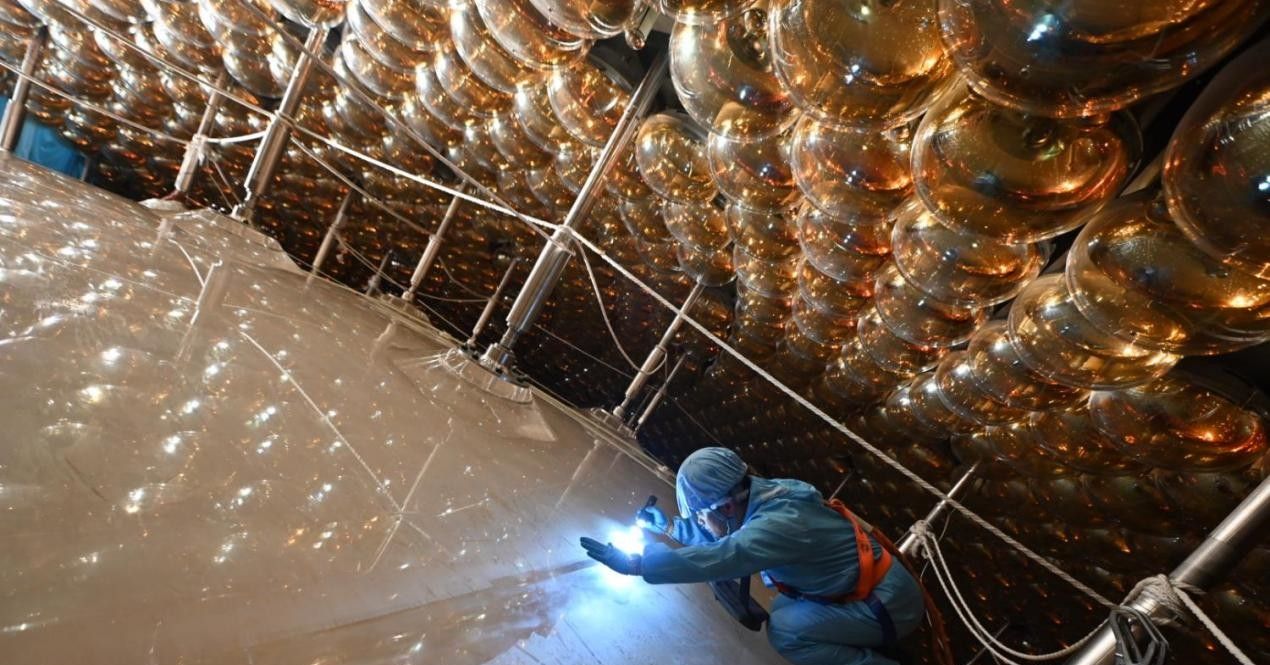
Located 700 meters underground near the city of Jiangmen in southern China, a giant sphere—35 meters in diameter and filled with more than 20,000 tons of liquid—has just started a mission that will last for decades. This is Juno, the Jiangmen Underground Neutrino Observatory, a new, large-scale experiment studying some of the most mysterious and elusive particles known to science.
Neutrinos are the most abundant particles in the universe with mass. They are fundamental particles, meaning they don’t break down into smaller constituent parts, which makes them very small and very light. They also have zero electrical charge; they are neutral—hence their name. All of this means that they very often don’t interact with other matter they come into contact with, and can pass right through it without affecting it, making them difficult to observe. It’s for this reason that they’re sometimes referred to as “ghost particles.”
They also have the ability to shift (or “oscillate”) between three different forms, also known as “flavors”: electron, mu, and tau. (Note that electron-flavored neutrinos are different from electrons; the latter are a different type of fundamental particle, with a negative charge.)
The fact that neutrinos oscillate was proven by the physicists Takaaki Kajita and Arthur Bruce McDonald. In two separate experiments, they observed that electron-flavored neutrinos oscillate into mu- and tau-flavored neutrinos. As a result they demonstrated that these particles have mass, and that the mass of each flavor is different. For this, they won the Nobel Prize in Physics in 2015.

But that’s not all that’s in store for the experiment. At a still later stage, it could help solve an even deeper mystery concerning the so-called Majorana neutrino—a theorized particle that has never been observed. (Majorana particles are particles that are simultaneously also their own antiparticles; a Majorana neutrino is therefore both a neutrino and its antineutrino.) Being able to understand whether or not neutrinos are Majorana particles would possibly mean getting to the bottom of one of the most complex questions in modern physics, namely why more matter is observed in the universe than antimatter, for which there is still no complete, coherent, and definitive explanation.
This story originally appeared on WIRED Italia and has been translated from Italian.



